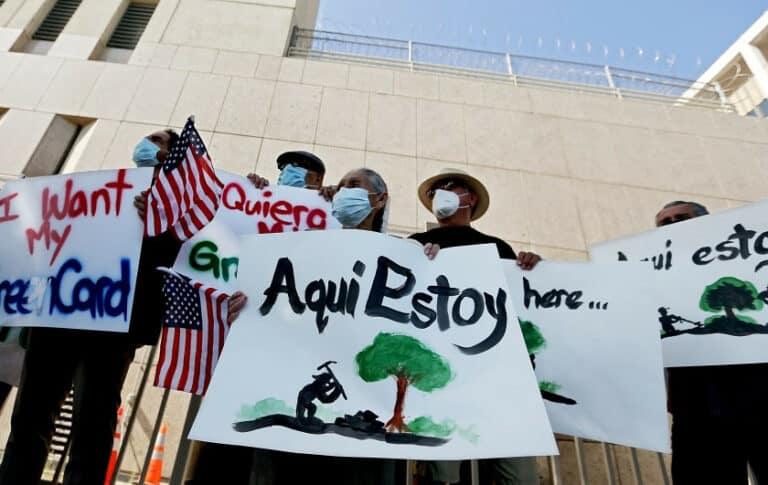Guy Davidov is the Elias Lieberman Professor of Labour Law at the Hebrew University of Jerusalem, and currently a visiting scholar at Berkeley Law.
This is the final post in a three-part series.
In the previous post I argued that subordination and dependency should be the key to attaching employee status. These tests are not unlike the ones already in existence in the U.S. and elsewhere, albeit with some important changes and additions, as briefly explained there. I have also argued that dependency alone should be sufficient to trigger the application of some (in fact many) work-related protections.
To what extent is there subordination (or “control”, in a very broad sense) in the typical relationship between Uber and its drivers? Benjamin Sachs has argued in several posts here that such control is present. Indeed, the drivers have to abide by detailed rules of the firm regarding the way they provide the service; and they are monitored at least to some degree through the app. Moreover, the fact that drivers provide the Uber service to Uber customers on behalf of Uber suggests that they are integrated in the organization, explaining why a relatively high degree of control is necessary (poor service would harm Uber’s reputation and its business vis-à-vis its customers; they are not the driver’s customers).
In contrast, drivers have a relatively high degree of freedom to choose how much to work and when to do so. Notably, there are sometimes cases in which employers create the illusion of such freedom by drafting agreements which appear to give it to workers, even when in practice they work full time and on regular hours. In the Uber case as well, it has been noted that there are strong incentives to work more hours and in times of heavy demand, as dictated by the firm (at p. 27). Still, it seems that there is a degree of real freedom in this respect. This is a relevant consideration when examining the existence of control (or more broadly, democratic deficits/subordination) in the relationship. Being under the control of an employer explains, for example, the need for laws limiting the number of hours that one can be required to work. If a driver is free to decide for herself how many hours to work, at least in this particular respect the relationship is not characterized by control/subordination.
While I consider control of one’s time a relevant indicator against employee status, I disagree with the view that this should be the main or only consideration. Overall, the indications of subordination seem to outweigh the contrary indications. There is at least some degree of control/subordination in this relationship, which is one of the vulnerabilities justifying employee status.
With regard to economic dependency – which as a normative matter is even more important – there are similarly strong indications supporting employee status. Most significantly, in my view, the firm is setting the cost of the ride and the payment to the driver unilaterally; the ability of drivers to influence the level of profit (other than by working more hours) is virtually non-existent; and they have almost no “entrepreneurial control” over business decisions. The main contrary indicator is the ownership of the car. To the extent one can use such equipment to spread risks, this is a sign of economic independence. Uber and similar platforms allow people to use an asset (their private car) to make an income in ways that were much more difficult in the past. The fact that the worker has control over this asset and can choose how to utilize it does indicate some independence.
An additional characteristic of Uber drivers that should be considered in this context is the fact that for many of them (though certainly not all) this is a “side gig” – they do this work only for a few hours per week. However, working only part-time (even a small part) does not seem material to our decision. If a driver is working with many different platforms – say a few hours per week with each platform – we can see this as spreading of risks and a sign of economic independence which should be taken into account. However this is a different indicator – having numerous client-employers – which could be a characteristic of some workers in the on-demand economy, but certainly not many of them. The mere fact that one is working part-time does not in itself indicate independence. When examining the existence/degree of dependence we should only be concerned with the ability to spread risks within the same line of work. The existence of other, irrelevant sources of income cannot be taken into account (otherwise workers will be seen as non-dependent and without access to employment rights if they have, for example, a rich spouse).
Overall, while taking into consideration the ownership of the car, there are stronger indications of economic dependency in this case. It appears, then, that both vulnerabilities are present and Uber drivers should be considered employees. The case seems difficult at first because of the combination of three characteristics that distinguish Uber drivers from “regular” employees: their freedom to choose how many hours and when to work; the ownership of the car used to provide the service; and the fact that many drivers work for a small number of hours per week. While neither of these characteristics is entirely new or unique to the “on-demand” economy, they all become much more possible and therefore common thanks to the new technologies; and their combination might create an impression that the drivers should be considered independent contractors. Nonetheless, a closer look, through the framework outlined above, shows that one of these characteristics (number of hours) is irrelevant, and the other two are relevant for different questions, and each is outweighed by other indicators.






Daily News & Commentary
Start your day with our roundup of the latest labor developments. See all
July 14
More circuits weigh in on two-step certification; Uber challengers Seattle deactivation ordinance.
July 13
APWU and USPS ratify a new contract, ICE barred from racial profiling in Los Angeles, and the fight continues over the dismantling of NIOSH
July 11
Regional director orders election without Board quorum; 9th Circuit pauses injunction on Executive Order; Driverless car legislation in Massachusetts
July 10
Wisconsin Supreme Court holds UW Health nurses are not covered by Wisconsin’s Labor Peace Act; a district judge denies the request to stay an injunction pending appeal; the NFLPA appeals an arbitration decision.
July 9
the Supreme Court allows Trump to proceed with mass firings; Secretary of Agriculture suggests Medicaid recipients replace deported migrant farmworkers; DHS ends TPS for Nicaragua and Honduras
July 8
In today’s news and commentary, Apple wins at the Fifth Circuit against the NLRB, Florida enacts a noncompete-friendly law, and complications with the No Tax on Tips in the Big Beautiful Bill. Apple won an appeal overturning a National Labor Relations Board (NLRB) decision that the company violated labor law by coercively questioning an employee […]